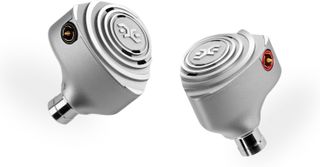Elysian Acoustic Labs Pilgrim review: Nothing magnificent
Elysian Acoustic Labs has halo status in the enthusiast audio segment, and for good reason; the brand consistently delivers remarkable designs with exquisite sound quality. So when Elysian Acoustic Labs announced that it would make IEMs that cost less than $500, there was considerable interest. The brand’s products cost five times as much, and until […]

Elysian Acoustic Labs has halo status in the enthusiast audio segment, and for good reason; the brand consistently delivers remarkable designs with exquisite sound quality. So when Elysian Acoustic Labs announced that it would make IEMs that cost less than $500, there was considerable interest. The brand’s products cost five times as much, and until now its most affordable IEM was the $1,699 Diva.
This changes with the introduction of the Pilgrim. The IEMs retain Elysian Labs’ fanatical attention to detail and build quality, and they’re easily one of the most distinctive IEMs you’ll see in this segment. But what you will appreciate most is the price; the Pilgrim is available for $399 at audio retailers like HiFiGoand it’s a tremendous value.
It’s particularly in the design that the Pilgrim stands out considerably from the rest of the pack, so that’s a good place to start. Most IEMs in this segment use resin-based shells, but the Pilgrim is made from machined aluminum and the sound nozzle is made from stainless steel.

Clearly, the choice of materials means the Pilgrim is built to last and, thanks to the brand, IEMs look like they should cost a lot more. Much depends on the design of the facade; the reflective rings with the Elysian Labs logo nestled in the middle give the IEMs a lot of design style and definitely attract attention. I didn’t notice this during everyday use, but the grooves between the rings collect a lot of dust, which was evident when taking photos of the product.

I wasn’t sure how comfortable the IEMs would be given the metal chassis, but that’s not an issue in everyday use. The waist leans toward the larger side, but I saw no issues with a snug fit, and the IEMs caused no fatigue even with prolonged use. The rounded corners make a difference in this regard, and thanks to the way the sound nozzle is designed you get very good insulation.

Then there’s the included cable. Elysian Labs includes a silver-plated copper cable with the Pilgrim, and it’s excellent. It has a transparent jacket covering the entire length of the cable, which gives it better durability, and the only problem I have with the cable is that it does not have a modular plug. You can choose a 3.5mm or 4.4mm connector when ordering the Pilgrim, but there’s no way to change between the two.

Speaking of which, the cable connects to the IEMs via Pentaconn plugs, and they stick out a bit. It would have been better to see a standard 2-pin system, as this would have allowed the Pilgrim to be used with a wider selection of aftermarket cables, and the connector itself is fragile, so you’ll need to be careful when plugging in the cable.
Elysian Labs has also done a great job with the packaging, and you get a hard case to hold the Pilgrim when not in use. However, you only get three SpinFit silicone tips with the package, and that’s not enough; I would have liked to see a greater selection of options given the asking price. That said, the grouped advice should be well suited.

The Pilgrim uses a hybrid driver configuration that includes a 9.2mm dynamic driver encased in a liquid silicone rubber shell designed to deliver better bass, and it’s joined by two sets of drivers to Sonion balanced armature: the Sonion 2300 for the mids, and a pair of E50 speakers from the brand which manage the treble.

The Pilgrim’s sound tubes and acoustic chamber are made by 3D printing, which allows the brand to offer better consistency during manufacturing. With an impedance of just 9 Ω and a sensitivity of 101 dB, the Pilgrim is incredibly easy to drive and you don’t need a powerful source to get the most out of the sound. I used it primarily with the Fiio M23 and M15S, and you can use any DAC dongle instead to drive the Pilgrim with your phone.

When it comes to sound, what’s immediately obvious is the bass shelf; the Pilgrim has a distinct sub-bass boost and you get a very noticeable and delicious rumble. The IEMs pair very well with mainstream music, and if you’re looking for a bass-heavy sound signature, this is one of the best in this segment. The exuberance doesn’t extend to the mids as much, but you still get excellent definition and clarity.
Fortunately, the bass extension doesn’t influence the mids and you get excellent clarity and detail recovery. The vocals are clear and natural, but what’s particularly interesting is the sound quality of the instruments: you can hear every nuance, even in an ensemble.
The treble has good definition, and while it’s a bit bright, there’s no noticeable hiss. The soundstage is wide and inviting, and the Pilgrim masters the technical details; the setting lends itself well to many modern genres.

Honestly, the Pilgrim looks like it should cost at least twice as much as its $399 retail price, and if you want high-quality IEMs with distinctive bass-driven sound, it’s a no-brainer. The small issues – lack of modular cable and limited accessories – ultimately make no difference, and the Pilgrim is now my go-to choice in the sub-$500 segment.















